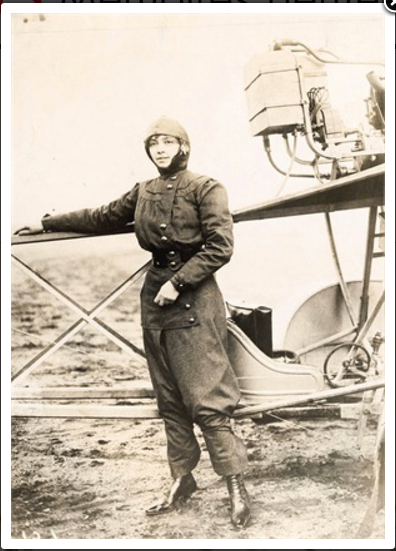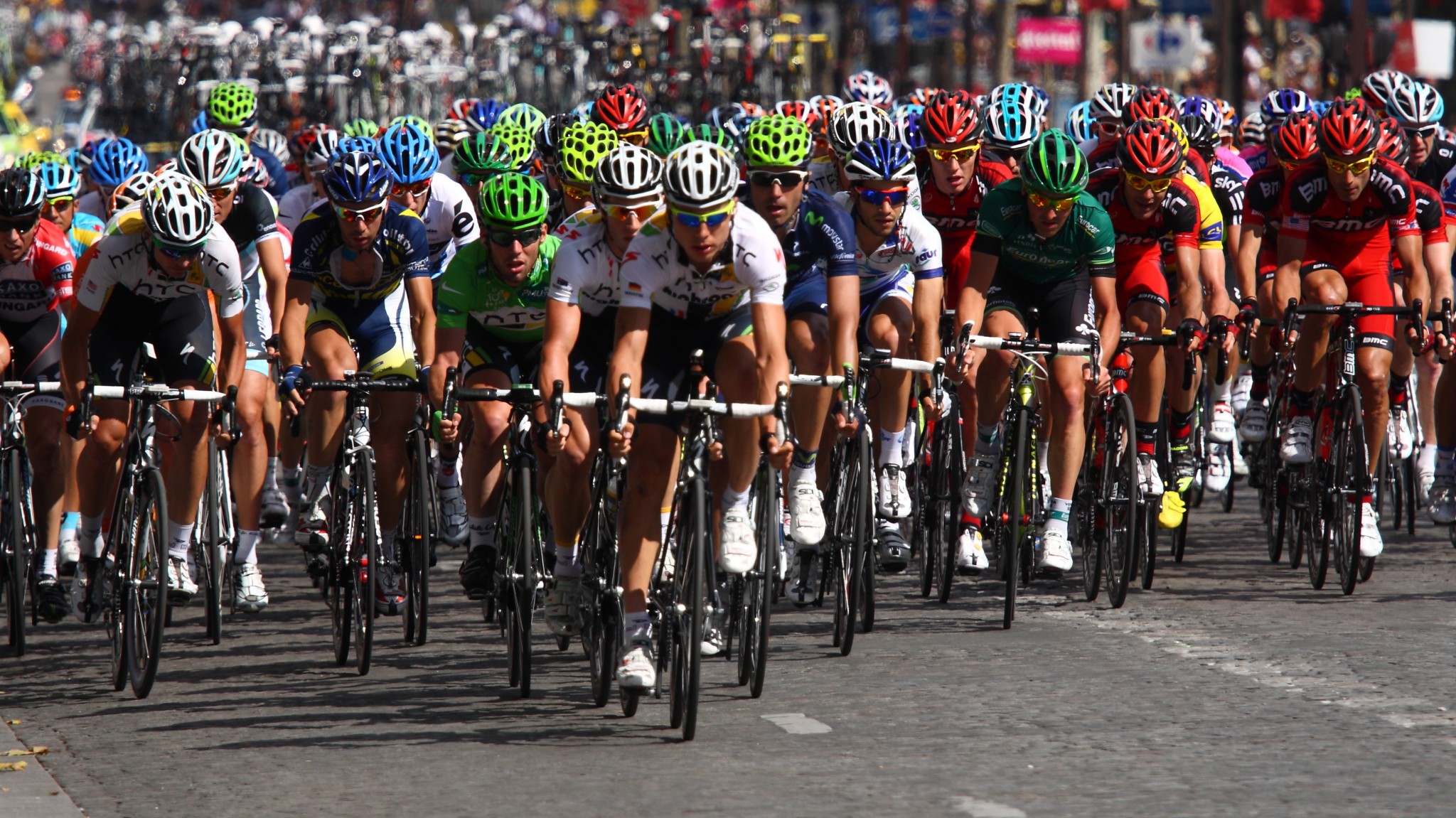In 1908, 36 men and one woman completed the Tour de France. Like today, women were prohibited from participating in that 4,497 kilometer (2794 miles) bicycling race. But Marie Marvingt (1875-1963)–a bobsledding champion, mountain climber, nurse, swimmer, fencer, the first female hot air balloonist to cross the English Channel, a pilot during WW I who flew bombing missions over Germany–covered the same route. She just had to do it right after the race ended.
Marie Marvingt in 1920:

Where are we going? The Tour de France gender gap is typical for most sports.
In Tour de France competitions, women have primarily been Tour hostesses. Positioned on the awards podium, they had to look attractive, act charming, serve some champagne and help the riders put on their leader’s jerseys.
Last Sunday, though, a group of women took a baby step toward participation. Before the men arrived at the final 57-mile ride around Paris, 120 female bicyclists covered the same course. The good news is that its timing coincided with a hugely publicized segment of the race so the women got the media coverage. The bad news is its length was a miniscule proportion of the entire Tour.
And that takes us to economics.
Between 1984 and 2004, there was a 21-day women’s Tour that was composed of 15 stages and less daunting than the men’s route. Cancelled in 2004, the women’s race returned with 5 stages and then 4 until it was eliminated in 2009. The reason? Lack of financial support. Why? We have some clues from a University of Minnesota women’s sports think tank report on media coverage for female athletes:
- less than 5% of all media coverage (I have also seen a 7% stat.)
- 1.62% of major network airtime
- 3.6% of the ESPN The Magazine covers
Yes, some women have narrowed the gender gap. Take NASCAR driver Danica Patrick ( a lap at 196 MPH!), Wimbledon’s equal prize money, and the growing attention at the Olympics to women’s competition.
But still, inequities abound. Male coaches get more than their female counterparts, total prize money for men on the PGA tour far exceeds what the women get, and male Indian cricketeers get $10,500 per test match while females, $1500 for the whole series. Meanwhile, at the top, in Fortune’s 2014 “Fortunate 50″ list of the highest paid US athletes, there was one woman. Boxer Floyd Mayweather Jr. was #1 with $105,000,000 in salary/winnings, Lebron James was #2 with $19,067,572 in salary/winnings and $38,000,000 in endorsements, and at #39, Serena Williams totaled $12,385,000 for salary/winnings and $10,000,000 in endorsements.
Our bottom line: In labor markets for female athletes, equilibrium pay is far below the men. To shift the demand curve, we need the synergy that more media, consumer and commercial appeal will create.







